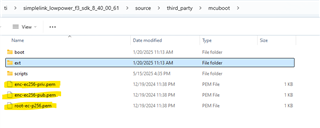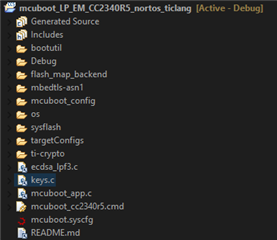Other Parts Discussed in Thread: SYSCONFIG
Tool/software:
Hi Team,
I am exploring on how to sign our firmware using our company PKS server and then using it in MCUBOOT imgtool to sign.
I have seen in the SDK public key, private key and root key are available, but not finding documentation how these files are created.

Could you please let us know some information about this. It would help us a lot.
With Regards
Ilan T


